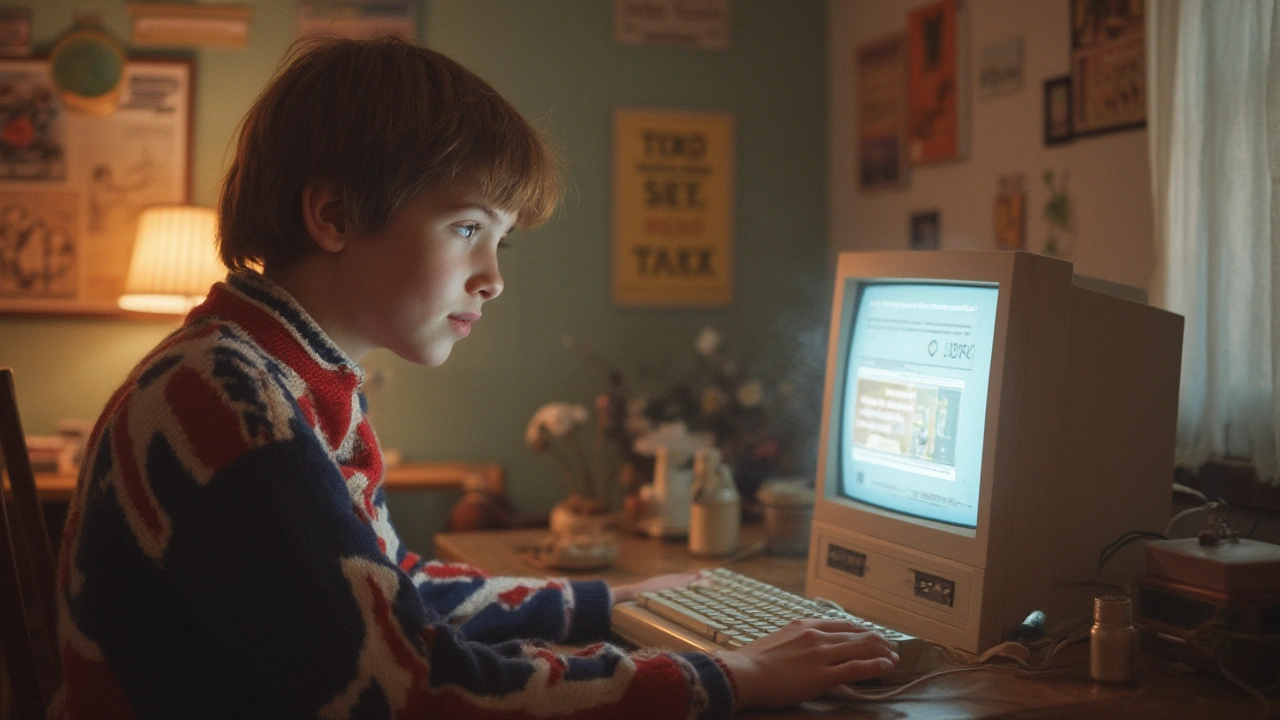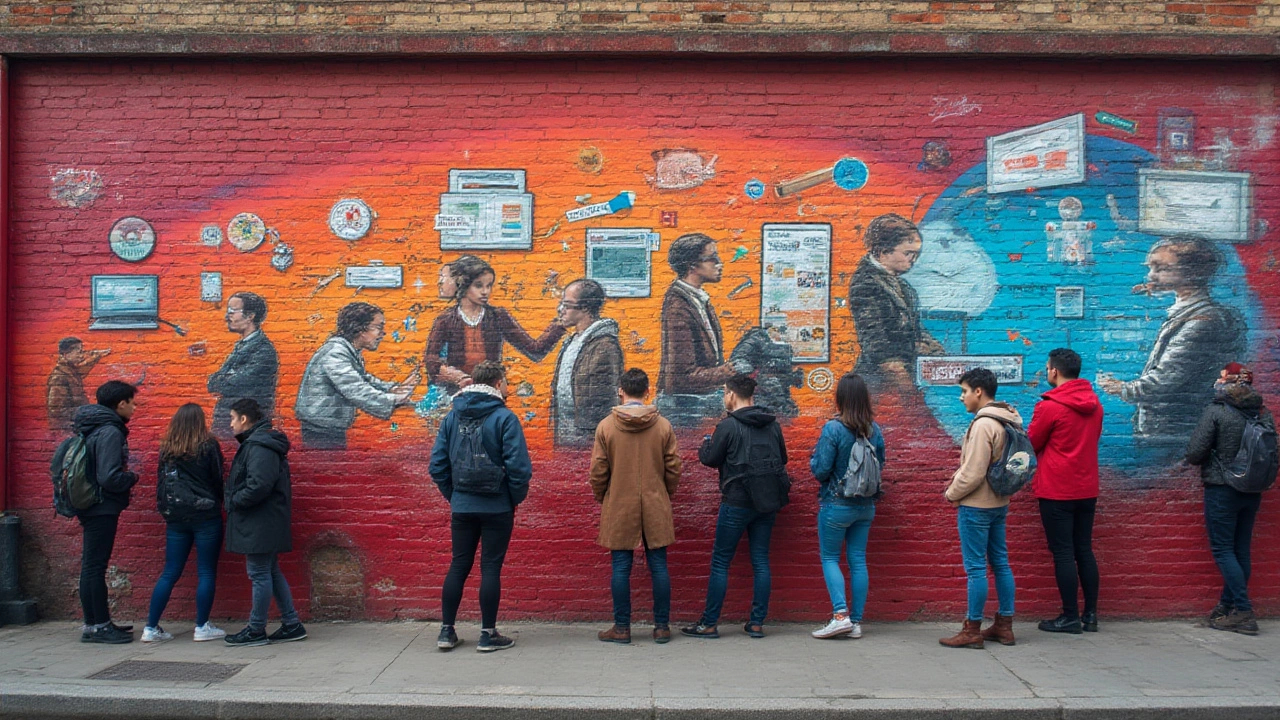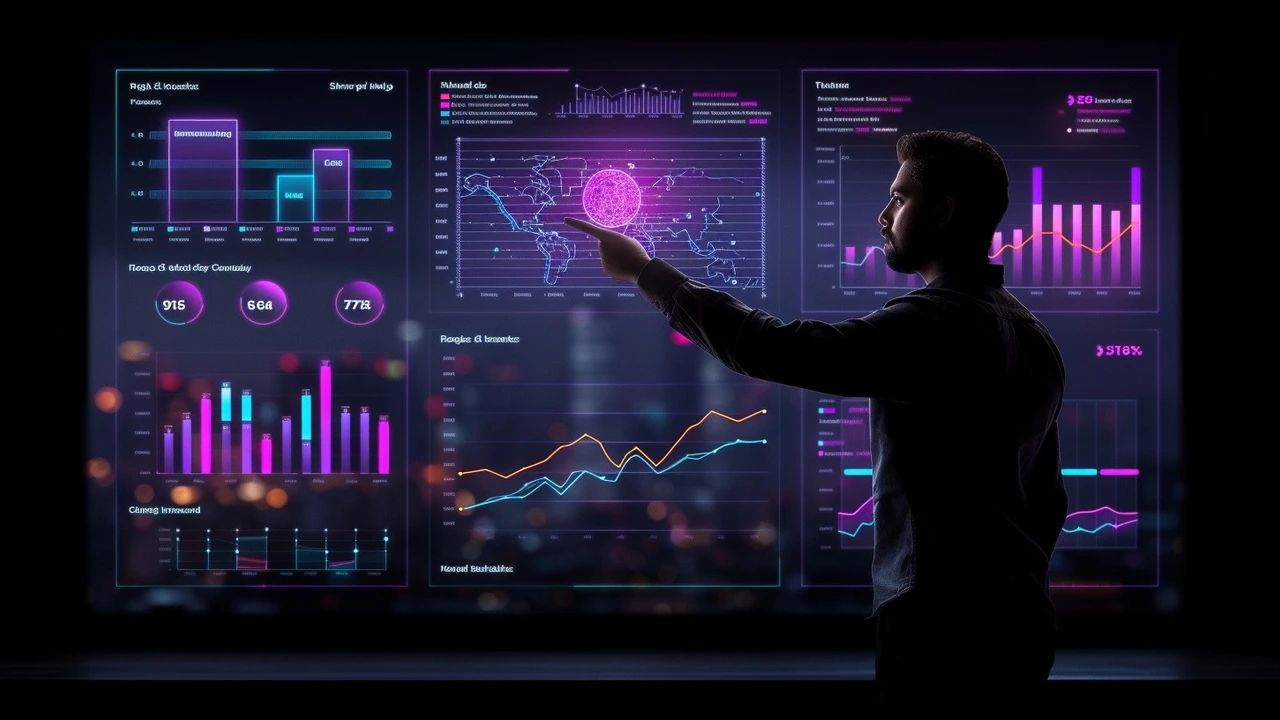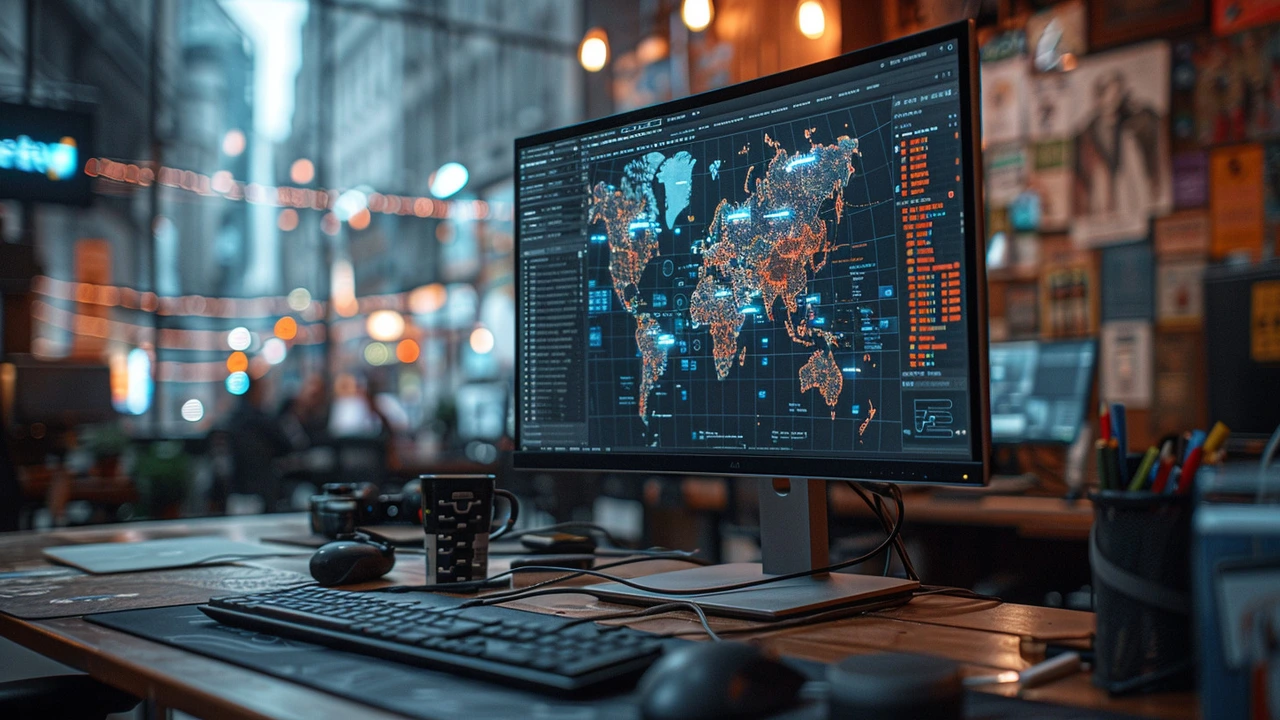Digital Marketing Evolution: From Banner Ads to AI-Driven Campaigns

Flashback to 1994—only 0.5% of the world had internet access. Now, more people own smartphones than toothbrushes (yes, wild but true). Digital marketing has been at the heart of this shift, shaping how we shop, learn, binge-watch, even flirt. What started as primitive banner ads has exploded into a world powered by savvy algorithms, voice search, and personalised journeys. The evolution hasn’t just been about slicker graphics and bigger budgets. It’s changed how businesses talk, how consumers expect to be wooed, and how trust is built. Buckle up for a deep dive into how digital marketing got here, what’s happening right now, and why the next wave might be wilder than you think.
The Humble Beginnings: How Digital Marketing Took Off
Rewind to the early 90s, when websites looked like neon flyers and Google was just a twinkle in Larry Page and Sergey Brin’s eyes. The very first banner ad appeared in 1994 on HotWired (for AT&T), and, get this, it boasted a click-through rate of 44%. By today’s standards—where a typical display ad might see 0.3%—that number is mind-blowing. But it was a time of discovery and curiosity. Brands mostly guessed what would work, hoping internet users (often called 'netizens' back then) would engage.
Email marketing soon followed—think chain letters crossed with company newsletters. Spam was a big problem, with people receiving hundreds of unwanted emails a week. In 2003, the CAN-SPAM Act came into play in the US, setting the stage for permission-based marketing and privacy laws elsewhere, like GDPR in Europe. SEO was also born as Yahoo! and AltaVista ruled the search scene, while website owners stuffed keywords everywhere—sometimes even white text on a white background—to grab attention.
By the late 90s and early 00s, Google arrived, changing everything. Its PageRank algorithm shook up how websites appeared in search, forcing marketers to think more about content quality. Pay-per-click (PPC) advertising became a game-changer. Google AdWords (now Google Ads) launched in 2000, letting brands target people in a way never before possible. But it wasn’t all digital. Early adopters combined email, banner ads, and even SMS with classic billboards and print to create the first 'integrated' campaigns.
Some brands made huge early wins. Hotmail added ‘Get your free email at Hotmail’ to every sent email, turning users into marketers. Within a year, they grew from nothing to 12 million subscribers—an early viral marketing case study.
Social Media Shakes the Table: The Rise of User-Driven Marketing
If the web gave brands a megaphone, social media handed everyone a microphone. With the launch of LinkedIn (2003), Facebook (2004), Twitter (2006), and Instagram (2010), marketing turned genuinely social. Suddenly, a witty tweet or heartfelt post could reach millions—sometimes overnight. This new world rewarded brands that could speak like real people, not faceless corporations, and listen to what their audiences were saying. Social proof flourished: honest reviews, viral challenges, and even the odd meme could do more for a company than a million-pound ad campaign.
Influencer marketing may feel like a Gen Z phenomenon, but it takes its cues from much older ideas about word of mouth. Only now, an influencer’s reach could be global. By 2018, influencer marketing was worth about $1.6 billion—the influencer economy is expected to top $24 billion by 2025. Platforms adapted: Instagram moved from square photos to stories, then reels, to lock in eyeballs. TikTok, with its snappy, algorithm-driven feed, exploded, shortening attention spans and rewarding creativity over production value.
Brands just had to get smarter. Engagement became king: rather than chasing arbitrary 'follower numbers', they started measuring shares, saves, and direct messages. There’s a knack to riding the algorithm—post too often and users switch off; post too little and the algorithm buries you. Authenticity started paying off. Small brands, indie creators, even pets (hello, Grumpy Cat) went viral thanks to relatable content. Crisis moments became high stakes—one slip-up, caught on camera, could spiral fast.
Customer care slid into DMs, turning what used to be formal phone calls into quick social chats. Entire marketing teams now run on real-time insights, using social listening tools to catch trends, spot reputation risks, or get the jump on memes. And don’t forget dark social—private shares on WhatsApp or Messenger. Brands still struggle to measure how much of the digital word spreads out of sight, but it’s a huge chunk of online influence.

The Data Revolution: Targeting, Personalisation, and Privacy
For marketers, data is both gold and a headache. The modern digital marketer has access to more info than ever—from click paths, time spent, and purchase histories, to deeply personal traits. Savvy marketers use this data to build finely-tuned customer journeys. A shopper could see a display ad for a pair of trainers, check them on their phone during lunch, get retargeted on Instagram with a discount code, and have the shoes on their doorstep next morning.
But this rush for personalisation has real consequences. In 2018, the Cambridge Analytica scandal exposed the risks: data misuse shook public trust and forced businesses to get serious about transparency. GDPR, rolled out across Europe, put users back in charge. Marketers now obsess about cookie banners, consent boxes, and the right way to use ‘first-party’ versus ‘third-party’ data. Apple’s 2021 iOS update let users block tracking, which instantly shrank the size of many brands' ad audiences. Gone are the days of collecting every scrap of data without asking.
Yet, when brands strike the balance right, magic happens. Netflix is famous for its recommendation engine—80% of what people watch comes from those AI-powered suggestions. Spotify Wrapped turns ugly data into social media gold every December. Personalisation isn’t just about pushing more products, but giving users something unique: search results tailored to an area, birthday messages, reminders when you’re low on a favourite product.
Of course, getting personal can get creepy. People notice when an ad follows them across the web—or when their phone seems to “listen in.” It’s a fine line: use data to help, not to stalk. As a tip, brands who let customers set their preferences openly—and explain how they use info—tend to win more loyalty. And don’t forget, even B2B marketing has gotten personal. LinkedIn data shows 78% of B2B buyers want messages tailored to their industry, not just generic business talk.
| Year | Global Digital Ad Spend (USD) | Mobile % |
|---|---|---|
| 2010 | $64 billion | 12% |
| 2015 | $170 billion | 42% |
| 2020 | $385 billion | 57% |
| 2025 (projected) | $645 billion | 68%+ |
AI, Automation, and Self-Learning Campaigns
Artificial intelligence is already at the steering wheel in digital marketing, and it’s only picking up speed. From chatbots that answer questions 24/7 to email systems that send just the right message at exactly 10:17 am (when you’re most likely to read it), AI’s fingerprints are everywhere. Marketers now lean on machine learning to predict buyer behaviour, choose the winning headline, or set the perfect bidding strategy in real-time. A report by Salesforce found that 84% of marketers now use AI in some form—up from just 29% in 2018.
Voice search and smart speakers are changing the SEO game. People speak differently than they type, so answering “near me” searches or long, question-style queries is now crucial. If your mum asks, “Alexa, where can I get the best Indian takeaway in Birmingham?”—restaurants need to show up, ready to chat in human-sounding language. The way brands create content is shifting too. AI can write draft blogs, transcribe meetings, even help edit videos, but the winning formula is still a blend of tech and human touch. Imagine a campaign that spots a trending meme, generates a catchy version for your brand, tests it on a sample audience, then auto-posts it—while people are still laughing, not after the punchline goes cold.
It’s not a total robot takeover, though. Creativity, timing, and authenticity can’t be faked. That said, automation has killed off a lot of boring, repetitive work. Lead scoring, A/B testing, reporting—these are all now handled by software. Marketers spend less time fiddling with Excel and more on coming up with Big Ideas. If you’re a business owner wondering where to start: invest in a CRM that integrates smoothly with your marketing tools, train your team on smart automation (not just tools, but when to use them), and keep experimenting with fresh AI features.
Still, AI brings new dilemmas. What happens when deepfakes are so good that anyone can make a viral video of a world leader or actor? What if AI-powered chatbots spread fake reviews? Digital marketers need to understand these risks. The best brands use AI transparently—telling people when they’re interacting with a bot, not pretending it’s a real person. If you’re building a campaign today, don’t just ask, “Can we automate this?”—ask, “Will this make us more helpful, human, or trustworthy?”

What’s Next? Tips, Tricks, and the Bold Future Ahead
If the past decade has taught us anything, it’s that the biggest changes often catch people off guard. Social commerce—where you can buy straight from TikTok or Instagram—has taken off. Shoppable livestreams are common in China, pulling in billions, and starting to pop up elsewhere. Voice and visual search are reshaping SEO. Augmented reality (AR) is letting brands like IKEA or Nike show off products in your lounge before you hit ‘buy’.
Privacy will dominate. Expect 'cookieless' tracking—Google plans to kill third-party cookies entirely by late 2025. Marketers will need to beef up first-party data: loyalty schemes, surveys, exclusive content, all build direct relationships. Community building is rising again, from private Facebook groups to Discord servers. It’s not just about followers, but fans who cheer for your next launch or defend you online.
Sustainability is moving mainstream. People want brands to be green, not just sell green. Think about carbon-neutral digital campaigns, transparent supply chains, and honest stories—not just checking boxes, but building real trust. Data from Edelman’s Trust Barometer shows that 58% of consumers will buy from, or advocate for, brands based on their values—even if the price is higher.
- Lean into purpose: Brands seen as making a positive impact attract more loyalty and free word-of-mouth.
- Don’t ignore emerging platforms: Gen Alpha is growing up with Roblox, not Facebook. Be ready to adapt.
- Personalise ethically: Always give people control and explain why data is collected.
- Invest in video: It’s expected that by 2026, videos will make up 88% of all online traffic.
- Test early, test often: The most successful campaigns experiment constantly—don’t wait for perfection.
One last thing—don’t be afraid of boring topics. Even industries like dental supplies or home insurance have hit huge TikTok numbers thanks to real, relatable stories. Audiences don’t care how shiny your advert is; they care if it speaks to them, solves their problem, or makes them smile. Digital marketing will keep changing, but at its heart, it’s all about understanding people. And as long as you remember that, you’ll never be left behind.



